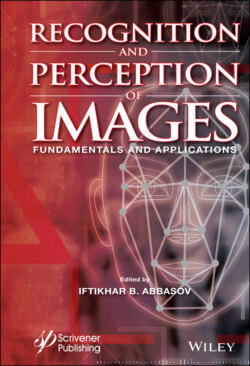Читать книгу Recognition and Perception of Images - Группа авторов - Страница 31
1.3.3 Subjective Contours
ОглавлениеSometimes the desire of our visual system to achieve closure can occur in a free area of the field of view; this leads to the appearance of boundaries or contours, which are called illusory or subjective. Examples of subjective contours are presented in Figure 1.3.15 [Abbasov, 2019].
Pay attention to the fact that in some cases not only the outlines are visible, but also the figures completely. According to the Gestalt explanation, the difference in lightness of form and background leads to the fact that the figure appears lighter or more intense than the background.
Figure 1.3.16 presents the Necker cube with subjective circuits as an example of the cognitive approach [Abbasov, 2019]. When viewing a drawing, it is perceived as a three-dimensional figure in the form of a cube, behind the vertices of which there are dark circles with a texture. Although the entire cube is visible, the lines appearing as edges are illusory.
Figure 1.3.15 Subjective contours.
Figure 1.3.16 Necker’s subjective cube.
Our visual system, when perceived, also takes into account mutual overlap to determine the position of the figure. The main role in the formation of subjective contours is played by the perception of the central figure, which partially obscures or blocks the surrounding elements. The more pronounced the apparent overlap with the central figure (the silhouette of the palm and the girl), the faster the subjective contours appear (Figure 1.3.17).
If the elements that cause the appearance of the contour are themselves identified as closed, independent figures, the effect of the subjective contour appears weaker. In this case, the finished shape of the overlapping elements causes an alternating perception of the central figure and the overlapping elements (Figure 1.3.18).
The apparent overlap helps us to perceive subjective figures also on the basis of three-dimensional forms. With the help of gestalt cognitive perception, the flat pictures presented in Figure 1.3.19 acquire volume, create the illusion of composite three-dimensional forms [Abbasov, 2019].
Figure 1.3.17 Strengthening the subjective contour overlapping elements.
Figure 1.3.18 The weakening of the subjective central rectangular contour.
Figure 1.3.19 Three-dimensional subjective contours.
